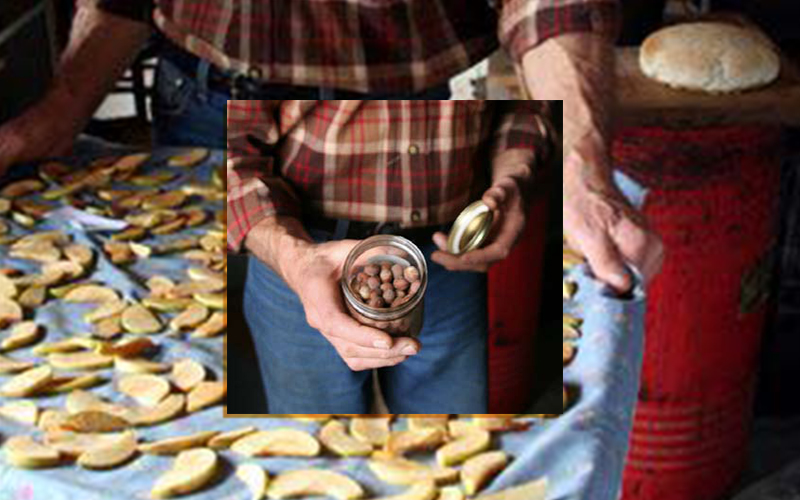Given the persistent lack of canning jars and freezers, what else can people do to preserve what was grown in the garden this year?
Somethings, like herbs and onions and garlic can be dried. A lot of things can be frozen, based on freezer space availability. COVID-19 notwithstanding, this summer was hot and dry and left many people with a lot of produce and more than many can preserve.
Warren resident Richard Czaplinski is well-versed in the art of preserving food in a root cellar or similar conditions.
“Root cellaring is just what the word implies, putting roots (and other vegetables and fruits) into the cellar. But there is more to root cellaring than just throwing a bunch of root vegetables into the basement and hoping for the best. Better results are obtained when attention is given to some details. Three conditions are of critical importance in root cellaring. How well you pay attention to them will determine the degree of your success. These are temperature, humidity and ventilation,” Czaplinski wrote in a 2009 booklet titled “Root Cellaring and Food Storage in Vermont: Why and How to Do It.”
Most root vegetables store best when the temperature is very near to freezing but not quite. Get them cool or cold after harvesting.
“The root cellar must be cooled down in the fall as soon as the night air starts to become cooler than the temperature of the earth. This is done by letting cold night air flow into the root cellar through a window or vent and shutting out the warmer air during the day. In winter, keeping the right temperature may mean adding some heat to the root cellar,” he wrote.
There are various ways to achieve ventilation either via windows or forced air via pipes to introduce cold or warm air as needed.
“With a 4- or 6-inch diameter pipe extending from the ceiling to the floor, cold air can be introduced at the lowest level. Warm air should exit from a place near the ceiling, because warm air rises as it is forced up by denser, heavier cold air. Depending on the weather conditions, windows are either opened or closed and fans in pipes are turned on or off. Since warm air is moister and cold air is dryer, humidity in the root cellar will be affected,” Czaplinski explained.
“To keep root vegetables until spring, it is critical to keep air in the root cellar moist. Usually a dirt or gravel floor accomplishes this, allowing moisture from the earth up into the cellar. If the floor is concrete, humidity can be maintained by misting the air periodically or by watering the concrete floor. Humidity can also be “locally controlled” for root vegetables by storing them layered between moist (but not wet) sawdust or sand in buckets,” he added.
WORK AROUNDS
Ideally, people might include a root cellar when making plans to build a house or a garage or when renovating or adding onto their houses. But if they don’t or can’t, Czaplinski offered some work arounds.
“Modifications can be made to a cellar, basement, mud room or closet to create the right conditions of temperature, humidity and ventilation. In a heated basement this often means creating a separate insulated room with its own ventilation. For onions and garlic, which require dryer conditions, this could mean insulating an unheated space like a mudroom or closet that stays cold (but not freezing) and dry. For winter squash, it might mean building shelves in a spare, unheated room that stays between 50 and 60 degrees,” he wrote.
Further vegetables can be stored in 5-gallon buckets between layers of slightly damp sawdust and stored in a shed, garage or entry porch. There are specific temperatures and humidity for various vegetables and fruit.
Here is a link to Czaplinski’s booklet with all the details: http://www.burlingtonpermaculture.com/uploads/4/2/8/9/4289790/root_cellaring_and_food_storage_r_czaplinski_2009.pdf







